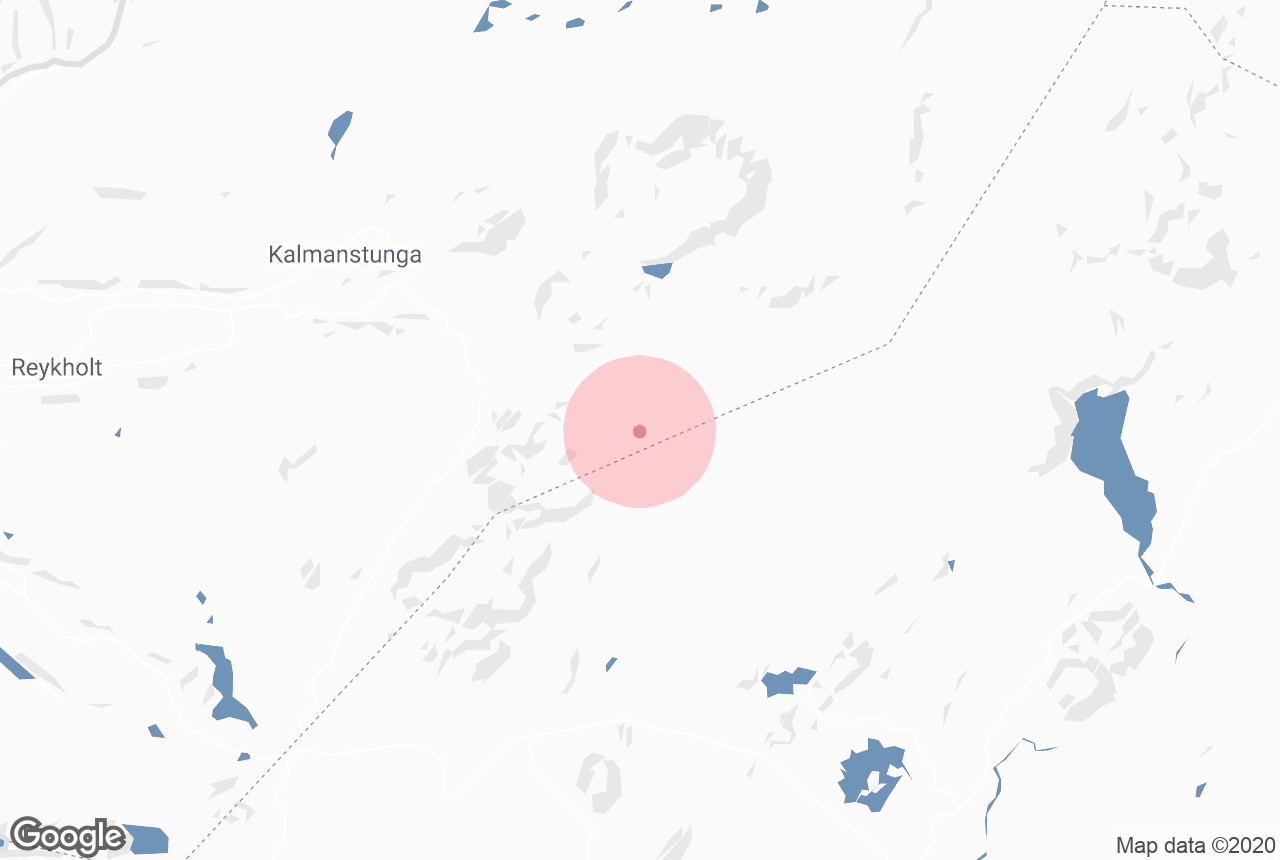ลางโจกุล (Langjökull) อันยิ่งใหญ่หรือ 'Long Glacier; ธารน้ำแข็งยาว' เป็นธารน้ำแข็งที่ใหญ่เป็นอันดับสองในไอซ์แลนด์ โดยมีพื้นที่ 935 ตารางกิโลเมตร ลางโจกุลเป็นธารน้ำแข็งที่ได้รับความนิยมมากที่สุดในประเทศไอซ์แลนด์สำหรับการเดินทางด้วยรถจี๊ปและสโนว์โมบิล และยังสามารถเล่นสกีและเดินป่าที่นี่ได้เช่นกัน
ลางโจกุลใช้เวลาขับรถเพียงหนึ่งชั่วโมงจากเรคยาวิก ดังนั้นคุณจึงสามารถเช่ารถราคาถูกและขับรถไปที่นั่นด้วยตัวเองเพื่อเข้าร่วมทัวร์สโนว์โมบิล เป็นต้น หรือคุณสามารถเข้าร่วมทัวร์ลางโจกุลเพื่อสัมผัสธารน้ำแข็งและการผจญภัยมากมายที่มีให้เลือก หากคุณสนใจเรื่องธารน้ำแข็ง ให้ไปที่ลิงก์นี้เพื่อดูทัวร์ธารน้ำแข็งทั้งหมดในไอซ์แลนด์ อ่านต่อเพื่อเรียนรู้ทุกสิ่งที่คุณจำเป็นต้องรู้เกี่ยวกับธารน้ำแข็งลางโจกุล
ทำไมคุณถึงวางใจในเนื้อหาของเราได้
Guide to Iceland คือแพลตฟอร์มท่องเที่ยวที่น่าเชื่อถือที่สุดในไอซ์แลนด์ ในแต่ละปี เราช่วยเหลือนักท่องเที่ยวหลายล้านคน เนื้อหาทั้งหมดของเราเขียนและตรวจสอบโดยผู้เชี่ยวชาญท้องถิ่นที่รู้จักไอซ์แลนด์อย่างลึกซึ้ง คุณจึงมั่นใจได้ว่าคำแนะนำด้านการท่องเที่ยวของเรามีความถูกต้อง ทันสมัย และเชื่อถือได้
เส้นทางไฮแลนด์
ลางโจกุลตั้งอยู่ในพื้นที่ไฮแลนด์ และมีเส้นทางบนที่สูงหลักสองเส้นทางที่เชื่อมระหว่างทางเหนือและทางใต้ของประเทศไอซ์แลนด์ขนาบข้าง
ถนน Kaldidalur ทอดยาวจากอุทยานแห่งชาติธิงเวลลีร์ไปทางเหนือจนถึงฮูสาเฟล ถนน Kjalvegur อยู่ทางตะวันออกของลางโจกุล และทางตะวันตกของธารน้ำแข็งฮอฟสโจกุลโดยเริ่มจากใกล้กับน้ำตกกุลล์ฟอสส์อันโด่งดังทางทิศใต้ และผ่านพื้นที่ความร้อนใต้พิภพฮแวราเวลลีร์ที่สวยงามทางตอนเหนือ
ภูมิประเทศของลางโจกุล
ลางโจกุลมีความยาวประมาณ 50 กิโลเมตร และกว้างไม่เกิน 20 กิโลเมตร และส่วนที่หนาที่สุดของน้ำแข็งมีความลึกประมาณ 580 เมตร จุดสูงสุดของธารน้ำแข็งอยู่ทางเหนือสุดซึ่งเรียกว่าบัลด์โจกุล โดยมีความสูงถึงประมาณ 1,450 เมตร เหนือระดับน้ำทะเล
ธารน้ำแข็งอยู่เหนือส่วนยอดเขาของเทือกเขาหินไฮยาโลพลาสไทต์ ยอดเขาเหล่านี้สามารถมองเห็นได้ในบางพื้นที่บนธารน้ำแข็ง นอกจากนี้ยังปกปิดกลุ่มภูเขาไฟที่ยังคุกรุ่นอยู่อย่างน้อยสองกลุ่ม ซึ่งมองเห็นแคลดีราหรือหลุมปล่องภูเขาไฟได้จากอากาศ
หนึ่งในกลุ่มภูเขาไฟเหล่านั้นเป็นแหล่งเชื้อเพลิงให้กับพื้นที่ความร้อนใต้พิภพฮแวราเวลลีร์ในทางตะวันออกของบัลด์โจกุล นอกจากนี้ทางทิศตะวันออกยังมีทุ่งลาวาคยาลเฮิร์น ซึ่งก่อตัวเมื่อประมาณ 7,800 ปีที่แล้ว
ทางตะวันตกเฉียงเหนือของธารน้ำแข็งเป็นกลุ่มภูเขาไฟอีกกลุ่มหนึ่งที่ทำให้เกิดทุ่งลาวาฮัลล์มุนดาร์เฮิร์นอันกว้างใหญ่ โดยมีแม่น้ำฮวิทเอาไหลผ่านในทิศทางของน้ำตกกุลล์ฟอสส์ นอกจากนี้ ในบริเวณนี้ยังมีซูร์ทเชลลิร์ (Surtshellir) ซึ่งเป็นถ้ำลาวาที่ยาวที่สุดในไอซ์แลนด์
ทางตะวันตกเฉียงใต้ของลางโจกุลคือทุ่งลาวาเพรสธนูคูร์ ซึ่งมีรอยแยกที่คืบคลานอยู่ใต้น้ำแข็ง ทางตอนใต้ของธารน้ำแข็งคือทุ่งลาวาลัมบาเฮิร์น และทางใต้ลงไปอีกคือทุ่งลาวาสคยาลด์เบรดาร์เฮิร์น และภูเขาไฟสคยาลด์เบรดูร์ที่เป็นภูเขาไฟรูปโล่
เมื่อเทียบกับภูมิภาคอื่นๆ ในไอซ์แลนด์ บริเวณนี้ถือว่าค่อนข้างสงบ โดยมีการปะทุเพียง 32 ครั้งในช่วง 10,000 ปีที่ผ่านมา
เข้าไปชมข้างในธารน้ำแข็ง (อินทูดิกลาเซียร์)
ใกล้กับยอดเขาที่สูงที่สุดของลางโจกุลมีอุโมงค์น้ำแข็งที่มนุษย์สร้างขึ้นซึ่งถือเป็นความน่าตื่นตาตื่นใจสำหรับผู้มาเยือนที่ผ่านมาทางธารน้ำแข็งนี้ อุโมงน้ำแข็งนี้ออกแบบและสร้างโดยนักธรณีฟิสิกส์และผู้สมัครชิงตำแหน่งประธานาธิบดี Ari Trausti Guðmundsson โดยมีจุดประสงค์เพื่อให้ผู้เข้าชมได้สำรวจภายในธารน้ำแข็งโดยไม่จำเป็นต้องมาไอซ์แลนด์ในช่วงกลางฤดูหนาวเพื่อเสี่ยงลุ้นดูถ้ำน้ำแข็งที่อาจไม่ปรากฏให้เห็น
ผู้เข้าชมจะเดินทางผ่านใต้แผ่นน้ำแข็งหนาของธารน้ำแข็งลางโจกุล สัมผัสกับสีฟ้าสดใสภายใน พร้อมทั้งได้เรียนรู้ถึงความงดงาม กระบวนการก่อตัว และการเปลี่ยนแปลงของธารน้ำแข็ง ที่นี่เป็นสถานที่เดียวในโลกที่สามารถสัมผัสประสบการณ์เช่นนี้ได้ ทัวร์ "Into the Glacier" มักถูกผสมผสานกับกิจกรรมผจญภัยอื่นๆ เช่น การขี่สโนว์โมบิล
ธารน้ำแข็งใกล้เคียง
ธารน้ำแข็งที่ตั้งอยู่ใกล้กับลางโจกุลมากที่สุดได้แก่ ธารน้ำแข็งเอริคสโจกุล (Eiríksjökull) ซึ่งซ่อนภูเขาที่สูงที่สุดในไอซ์แลนด์ตะวันตกและธารน้ำแข็งธอริสโจกุล (Þórisjökull) เอาไว้ นอกจากนี้ยังมีฮรูทเฟลล์สโจกุล ซึ่งตั้งอยู่ทางด้านตะวันออกของลางโจกุลด้วย
ระหว่างธอริสโจกุลและ (Þórisjökull) และ (Geitlandsjökull) มีหุบเขาที่เรียกว่าธอริสดาลูร์ นอกจากทิวทัศน์ที่สวยงามแล้ว ที่นี่ยังปรากฏอยู่ในนิทานซากาของไอซ์แลนด์ (Grettis Saga) อีกด้วย เรื่องมีอยู่ว่า Grettir ผู้ทำผิดกฎหมายหลบหนีมาอาศัยที่นี่เป็นเวลาหนึ่งฤดูหนาว
ลางโจกุลและวงกลมทองคำ
เส้นทางท่องเที่ยวยอดนิยมที่สุดของไอซ์แลนด์อย่างวงกลมทองคำนั้นจะไม่สามารถมีอยู่ได้หากปราศจากธารน้ำแข็งลางโจกุล เพราะทั้งสามจุดสำคัญของเส้นทางนี้จะไม่อยู่ในสภาพปัจจุบันหากไม่มีการละลายของน้ำแข็ง
น้ำตกกุลล์ฟอสส์เป็นตัวอย่างที่ชัดเจนที่สุดของเรื่องนี้ แม่น้ำที่ไหลเข้ามาหรือที่เรียกว่าฮวิทเอานั้นเป็นแม่น้ำธารน้ำแข็งที่ไหลตรงมาจากลางโจกุล ขนาดของแผ่นน้ำแข็งสามารถคาดเดาได้จากปริมาณน้ำที่ไหลลงมาที่นี่ทุกวินาที
น้ำพุร้อนในพื้นที่ไกเซอร์นั้นได้รับน้ำจากใต้ดิน ซึ่งเป็นน้ำที่ละลายจากธารน้ำแข็งลางโจกุลและไหลเข้าสู่ทุ่งลาวาโดยรอบ ซึ่งมีหินที่มีรูพรุนสูง และไหลเป็นแม่น้ำใต้ดินไปยังพื้นที่พลังงานความร้อนใต้พิภพ ก่อนที่จะพุ่งออกมาจากช่องระบายที่เกิดขึ้นตามธรรมชาติ
แม้ว่าธิงเวลลีร์จะยังคงมีสถานะเป็นอุทยานแห่งชาติและมรดกโลกได้โดยไม่มีลางโจกุล เนื่องจากได้รับสถานะนี้มาจากการเป็นสถานที่ดั้งเดิมของรัฐสภาตัวแทนที่เปิดดำเนินการมายาวนานที่สุดในโลก แต่ธิงเวลลีร์น่าจะมีความสวยงามน้อยลงอย่างเห็นได้ชัด
มีน้ำพุธรรมชาติหลายแห่งอยู่ทั่วอุทยาน ซึ่งเกิดจากน้ำที่ละลายใต้ดินของธารน้ำแข็งด้วย เนื่องจากกระบวนการกรองที่ยาวนาน น้ำจึงกลายเป็นน้ำที่เกิดขึ้นตามธรรมชาติที่ใสที่สุดในโลก
รอยแยกซิลฟราจึงเป็นสถานที่ดำน้ำตื้นและดำน้ำลึกที่ดีที่สุดในประเทศ และได้รับการจัดอันดับให้เป็นหนึ่งในสิบอันดับแรกสำหรับกิจกรรมดังกล่าวในโลกอย่างต่อเนื่อง











